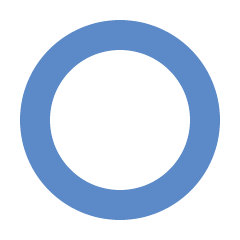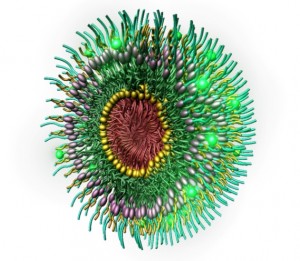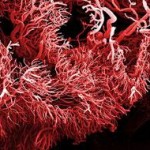Adult Sibling Rivalry is something that has gone on in my family far too long. It’s a painful thing.
Health
08
Nov 12
For my family and friends…
I write this as a plea for YOU to become aware of one of the leading causes of death in America… in the world.
It’s long, but PLEASE read the entire article!
What is Type 2 Diabetes?
Type 2 diabetes, formerly called adult-onset diabetes, is the most common type of diabetes. About 95 percent of people with diabetes have type 2. People can develop type 2 diabetes at any age, even during childhood. However, this type of diabetes develops most often in middle-aged and older people. People who are overweight and inactive are also more likely to develop type 2 diabetes.
In type 2 and other types of diabetes, you have too much glucose, also called sugar, in your blood. People with diabetes have problems converting food to energy. After a meal, food is broken down into glucose, which is carried by your blood to cells throughout your body. With the help of the hormone insulin, cells absorb glucose from your blood and use it for energy. Insulin is made in the pancreas, an organ located behind the stomach.
Type 2 diabetes usually begins with insulin resistance, a condition linked to excess weight in which your body’s cells do not use insulin properly. As a result, your body needs more insulin to help glucose enter cells. At first, your pancreas keeps up with the added demand by producing more insulin. But in time, your pancreas loses its ability to produce enough insulin, and blood glucose levels rise.
Over time, high blood glucose damages nerves and blood vessels, leading to problems such as heart disease, stroke, kidney disease, blindness, dental disease, and amputations. Other problems of diabetes may include increased risk of getting other diseases, loss of mobility with aging, depression, and pregnancy problems.
What Were My Symptoms?
My awareness of any changes really sneaked up on me. Although I’d been diagnosed pre-diabetic for a few years (blood glucose hovering around 130 mg/dl), I didn’t feel any different, no symptoms, no real worries in my mind. In early 2007, I began to notice the symptoms but I didn’t even get it that they were symptoms.
- Insatiable thirst
- Extreme drowsiness
- Low energy and fatigue
- Lack of motivation
- Loss of concentration
- Unexplained weight loss
- Eyeglass prescription change
If you’ve ever researched diabetes, you know that these are classic signs of Type 2 Diabetes. These symptoms are not once-in-a-while, we all have moments or days when we feel at least one of them. The symptoms are constant. All the time. I realize now that I was sick for almost a year before I went to the doctor. It’s THAT sneaky. I would call in sick to work almost every week; I’d spend my lunch hour napping in my truck; I’d go through at least a six-pack of Diet Coke every day; I was duped into thinking my diet was ok because I lost 28 pounds in two months even though I hadn’t changed my diet during that time.
How Did I Finally Get Myself Diagnosed?
It wasn’t until my manager (a diabetic) approached me and suggested I see my doctor that I began to understand how telling my symptoms were. They had become the norm for me.
I got home from work and dug out my long unused glucose meter and checked my blood sugar for the first time in over a year.
It read 396 mg/dl. Normal for fasting is 100 mg/dl or less.
I made my doctor appointment and went in actually feeling pretty good about my unexplained weight loss of 28 pounds. She wasn’t so thrilled and immediately prescribed insulin shots. No pills, no messing around… shots, injections, needles. I became an official Insulin-dependent Type 2 Diabetic.
First Year Daily Routine
I had to (and still do) check my glucose levels at least four times a day. Once in the morning and before each meal. That requires a poke in the finger with a lancet, just enough to draw a small drop of blood. The drop of blood is drawn onto a test strip in a glucose monitor. A few seconds later I’d get a reading on the monitor. Based on that and the number of carbohydrates I expected to eat for that meal, I’d determine how much fast acting insulin I had to inject. Typically anywhere from just a few units to ten or more units.
At night before bed, I’d have an injection of a longer acting insulin to last through the night and attempt to maintain a good low basal rate of glucose.
So, a minimum of four finger pokes a day, which sting, and a minimum of five shots in the stomach or leg a day… every day. That’s a minimum of 9 pokes a day, 63 pokes a week, 270 pokes a month. My fingertips bruise, and my tummy has track marks.
And you can’t take a break. If you go somewhere, it either has to be timed between meals or you have to drag all your gear along. There are insulin pens that help reduce what you pack along; a vial of insulin, alcohol wipes, and, of course, hypodermic needles. But you still have a glucose monitor, a vial of test strips, and a lancet device.
~to be continued~
27
Jul 12
Is Avastin Risk Worth the Benefit?
. By Jane Mundy
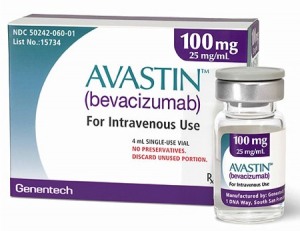 According to Russell, who stopped taking Avastin after his oncologist determined the cancer drug caused kidney damage, the risks outweigh the benefits.
According to Russell, who stopped taking Avastin after his oncologist determined the cancer drug caused kidney damage, the risks outweigh the benefits.
Russell underwent a second craniotomy one year ago (he was diagnosed with brain cancer in 2008) and he took Avastin for 11 months—long enough to cause kidney damage. “I won’t know the extent of the kidney damage until I have another MRI, but I am concerned,” says Russell. “Avastin is a stand-alone, tumor starvation therapy. It is a double-edged sword.
“I stopped taking Avastin last December because there was protein in my urine, which means that I’m not getting enough protein from the foods I eat and also a sign of kidney damage,” Russell explains. “My doctor took me off Avastin, hoping the damage would reverse itself, but so far it hasn’t, so it would appear that I do have permanent kidney damage. When I pee, my urine forms all kinds of bubbles—I call it my ‘afro-comment.’ It’s like a reminder that these problems can wear on you if you let them…”
But Russell, who will be 50 in March, is doing his best not to let Avastin side effects wear him down, and he has clearly kept his sense of humor. “I’m a very positive person and feel fortunate that I am still here,” he says. “I didn’t have any problems before taking Avastin; I was in perfect shape—I used to run marathons.
“Now my doctor is sending me to a kidney specialist, who is having my blood and urine checked weekly, and has scheduled me for another ultrasound. After my oncologist told me about Avastin and the link to kidney damage I did some research online; it didn’t surprise me that there are now so many Avastin lawsuits.”
A study published in the Journal of the American Society of Nephrology (June 2010) has shown that Avastin is linked to kidney damage. According to the researchers, “a little more than 2 percent of people taking Avastin developed severe proteinuria. Their risk for the condition was found to be almost five times higher than for patients receiving only chemotherapy.” Although the researchers found that patients with kidney cancer were at the highest risk of developing this condition, those who took higher doses of Avastin were at higher risk as well.
Even with the findings from this study, however, doctors stress that it doesn’t mean patients and their providers should stop using it. “The benefits of Avastin are tremendously important for patients who have the types of malignancies that may be responsive to this medication,” said Dr. Bryan Becker, president of the National Kidney Foundation, and some doctors said the incidence of proteinuria with the treatment is not a cause for alarm.
However, a number of researchers and other medical experts said that the results of the study indicate the importance of keeping a close eye on kidney function. “Patients should have baseline determination of kidney status and proteinuria and microalbuminuria [the presence of small amounts of protein in the urine] before starting therapy,” said Dr. Frederick Kaskel, professor and vice chairman of pediatrics at Children’s Hospital at Montefiore Medical Center in New York. And patients need to talk to their physician about having their urine checked before every Avastin treatment. Further, proteinuria places a person at higher risk for blood clots and other complications on top of the risks related to cancer and chemotherapy.
Russell has weighed the odds; he believes that Avastin risks outweigh the benefits and has decided to stop taking the anti-cancer drug. And he is discussing legal options with an Avastin attorney.
26
Apr 12
An apple a day…
Nature’s Rx: Farmers Markets Cropping Up at Hospitals
Christopher Wanjek, LiveScience Bad Medicine Columnist
 Hospitals and health clinics have pharmacies for their patients, but why not add a place to pick up vegetables and fruits, too?
Hospitals and health clinics have pharmacies for their patients, but why not add a place to pick up vegetables and fruits, too?
After years of treating their clientele for the ravages of poor nutrition — obesity, Type 2 diabetes, heart disease and stroke — some doctors finally are catching on to the idea that prescribing carrots instead of pharmaceutical drugs might be a better option. It’s preventive medicine 101.
The Harris County Hospital District serving Houston, Texas, and its surroundings is among just a handful of health organizations that have incorporated a full-fledged farmers market into its facilities. The reasons are many: Most of the patients coming to its clinics are poor; their neighborhoods are largely devoid of grocery stores selling healthy foods and instead are filled with fast-food outlets and small shops selling snacks; and many of those people with access to supermarkets either cannot afford fresh foods there or do not understand basic nutrition.
As a result, the poor and middle class living in these murky food swamps, where unhealthy food is cheaper and more plentiful than healthy food, suffer disproportionately from high rates of obesity and related diseases. A doctor’s advice to “eat better” is essentially useless given these circumstances.
Via: Live Science
27
Jan 12
Avgolemono Soup – Egg and Lemon Soup

This wonderful egg-lemon Greek soup is easy to make and delicious.
Chicken stock and breast, along with a small amount of rice provide the heartiness. But the whipped eggs and lemon add the sumptuous dimension that make this dish so unique.
I’m so happy that my dear friend Nan suggested it. It’s on my absolute favorites list now!
Please excuse the Southwestern USA dishes… they are what I have! Southwest Greece?
16
Nov 11
Bill’s Letter to Cancer
Here is the letter my son, Bill, wrote to cancer on his FaceBook page:

Dear Cancer,
For almost 8 years you and I have had this relationship. I can’t begin to tell you how much I want you out of my life. From the first day we met, you have only caused pain for not only me, but my family and friends as well. There are times you are so demanding that you won’t let me go out with my friends to have a good time. You take all my money. Bottom line, I am breaking up with you, changing the locks and kicking you out!
I hate you,
Bill
God, I love him…
25
Oct 11
Bachmann: Charities Can Take Care Of The Uninsured
Bachmann: Uninsured Americans Can Rely On ‘Charitable Organizations’ For Health Care
 By Igor Volsky on Oct 24, 2011 at 9:00 am
By Igor Volsky on Oct 24, 2011 at 9:00 am
Republicans have a hard time explaining how they would make up for the loss in coverage to 32 million Americans if they succeed in repealing the Affordable Care Act. Deregulating the health insurance market and instituting malpractice reform will only do so much — in fact, a Congressional Budget Office analysis of the GOP’s standard health care plan found that such an approach would only extend coverage to three million people and actually increase the overall uninsured rate — and so the party is often forced to look at other less dependable sources for health care: charity.
23
Oct 11
Scientist proves potential of new nanoparticle design for cancer therapy
A new type of nanoparticle developed in the laboratories at the University of North Carolina has shown potential for more effective delivery of chemotherapy to treat cancer. Wenbin Lin, PhD, Kenan Distinguished Professor of Chemistry and Pharmacy, and colleagues report their finding in the Sept. 14, 2011 issue of Angewandte Chemie.
In laboratory studies, Lin and colleagues developed and tested a new type of nanoparticle that can deliver larger amounts of a drug and will not leak the drug as the particle circulates through the blood stream on its way to the target.
In the proof-of-concept experiments, they tested the nanoparticle’s ability to deliver therapeutic doses of the chemotherapy drug oxaliplatin to colon and pancreatic tumors. The oxaliplatin-based particles showed significant growth inhibition of pancreatic tumors that are extremely difficult to treat. The nanoparticle has two to three times therapeutic efficacy over oxaliplatin.
The nanoparticle is different from other nanoparticles in its very high drug loading and in the ability to release in the chemotherapeutics in a controlled fashion. The release of therapeutic cargoes depends on the naturally occurring molecules that are more abundant in many tumors.
Lin explains, “The polysilsesquioxane (PSQ) particle we have developed carries extremely high loadings of oxaliplatin-based chemotherapeutics. The particles are stable under normal physiological conditions, but can be readily reduced to release the platin cargoes in highly reducing tumor microenvironments that have high concentrations of reducing agents. As a result, they have very little background release and are more easily targeted to tumors than most existing particles. We need to thoroughly determine the pharmacokinetics and other important properties of the PSQparticle in order to translate this particle platform to the clinic.”
18
Oct 11
The Science of Irrationality
A Nobelist explains our fondness for not thinking
By JONAH LEHRER
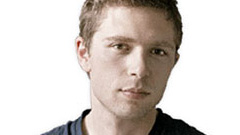 Here’s a simple arithmetic question: “A bat and ball cost $1.10. The bat costs $1 more than the ball. How much does the ball cost?”
Here’s a simple arithmetic question: “A bat and ball cost $1.10. The bat costs $1 more than the ball. How much does the ball cost?”
The vast majority of people respond quickly and confidently, insisting the ball costs 10 cents. This answer is both incredibly obvious and utterly wrong. (The correct answer is five cents for the ball and $1.05 for the bat.) What’s most impressive is that education doesn’t really help; more than 50% of students at Harvard, Princeton and the Massachusetts Institute of Technology routinely give the incorrect answer.
Daniel Kahneman, a Nobel Laureate and professor of psychology at Princeton, has been asking questions like this for more than five decades. His disarmingly simple experiments have profoundly changed the way that we think about thinking. While philosophers, economists and social scientists had assumed for centuries that human beings are rational agents, Mr. Kahneman and his scientific partner, the late Amos Tversky, demonstrated that we’re not nearly as rational as we like to believe.
When people face an uncertain situation, they don’t carefully evaluate the information or look up relevant statistics. Instead, their decisions depend on mental short cuts, which often lead them to make foolish decisions. The short cuts aren’t a faster way of doing the math; they’re a way of skipping the math altogether.
Continue reading →
08
Oct 11
Tumours grow their own blood vessels
Finding explains failure of drugs that target host vasculature.
Alla Katsnelson
Tumours don’t just rely on their host’s blood vessels for nourishment — they can make their own vasculature, according to two independent studies from the United States and Italy. The findings offer an explanation for why a class of drug once heralded as a game-changer in cancer treatment is proving less effective than had been hoped.
Almost four decades ago, Judah Folkman, a cell biologist at Harvard Medical School in Boston, Massachusetts, proposed that tumours were dependent on the blood vessels surrounding them, and that choking off that blood supply would kill the cancer1. Bevacizumab (Avastin), the first drug to block blood-vessel growth, was approved in 2004, but it and other ‘angiogenesis inhibitors’ have proved disappointing in the clinic, extending patients’ lives for at best a few months.

